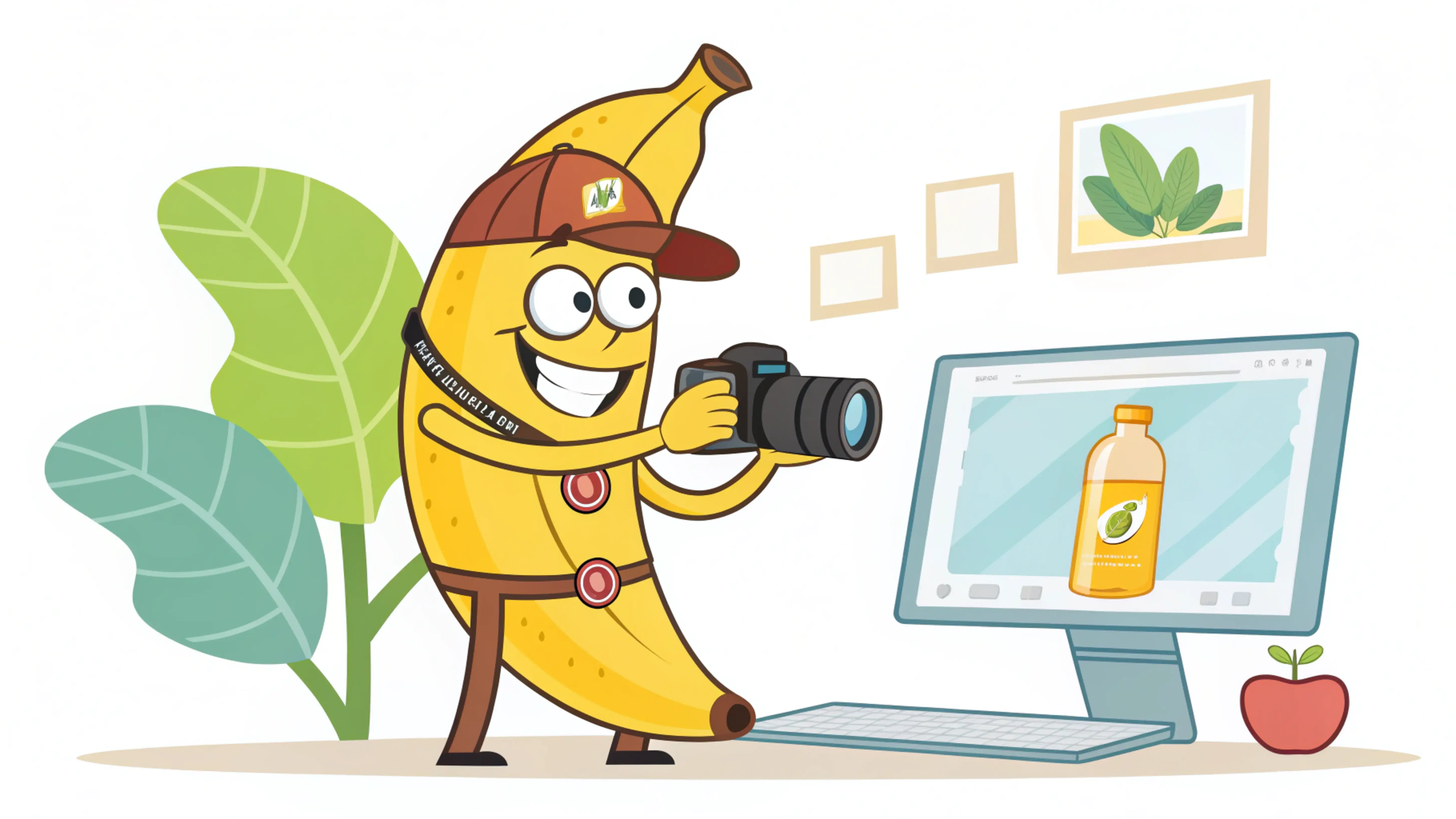How to Create Product Photography with Nano Banana

Google’s new AI image model, Gemini 2.5 Flash (also known as Nano Banana), is a powerful tool for creating professional-grade product photography without a studio.
This guide will walk you through the steps to generate and refine incredible product images using just a few prompts and reference photos.
Step 1: Getting Started
Before you begin, you’ll need two things: access to the tool and a clean image of your product.
- Access the Tool: Go to gemini.google.com. In the top-left corner, ensure that you have “Gemini 2.5 Flash” selected to access its advanced image generation capabilities.
- Prepare Your Product Image: For the best results, use an image of your product with the background removed (a PNG file with a transparent background is ideal). This allows the AI to cleanly place your product into any new scene you describe.
Step 2: Create Your First Simple Scene
Let’s start with a basic flat lay to understand how the model works. For this example, we’ll use a bottle of hot sauce.
- Upload Your Images: Drag and drop both your product image (the hot sauce bottle) and a reference image for the background (e.g., a photo of chicken wings) into the prompt window.
- Write a Clear Prompt: Describe the scene you want to create. Be direct and specific. - Example Prompt: “Create a flat lay image of the hot sauce bottle lying amongst the chicken wings from the reference photo.”
- Generate and Review: The AI will generate an image that combines your product with the described scene. Notice how accurately it reproduces the label—this is one of the model’s key strengths.
Step 3: Generate a Complex, Dynamic Scene
Now, let’s try something more advanced that would be difficult to photograph in real life.
- Combine a Product and a Concept: Use your product image and a reference photo that demonstrates the concept you’re aiming for. For example, to submerge the bottle in sauce, use a reference image of an object floating in a liquid.
- Write a Detailed Prompt: Explain exactly how you want the elements to interact. - Example Prompt: “Place the hot sauce bottle so it is half submerged in orange hot sauce. Use the reference image to show how it should be floating, but replace the water with orange hot sauce. Scatter chicken wings around it.”
- Analyze the Details: Observe how the AI not only creates the scene but also adds realistic details, like sauce on the bottle cap, to make the image more believable.
Step 4: Edit and Refine Your Image with Conversation
The true power of this tool is its ability to edit images through simple, conversational follow-up prompts. You don’t need to start over to make changes.
A. Change the Perspective:
After generating an image, you can ask to see it from a completely different angle.
- Example Prompt: “Using the image you just created, change the perspective. Show the scene from the surface level with a hand pulling the bottle out of the hot sauce.”
B. Remove Unwanted Details:
If there’s an element in the image you don’t like, just ask the AI to remove it.
- Example Prompt: “This looks great, but can you remove the splash at the bottom of the hand?”
C. Adjust the Lighting:
You have full control over the mood and lighting of your scene.
- Example Prompt: “The lighting is a bit flat. Change it to be more dramatic and add strong highlights.”
Read More : 14 Tips For Nano Banana Ai
Step 5: Build a Scene with Multiple Edits
You can continuously build upon a generated image by making a series of iterative requests. Let’s try this with a beverage can.
- Start with a Base Image: Generate a simple scene. - Prompt: “Place this Prime can amongst ice cubes on a glass surface.”
- Refine the Lighting: Ask for a specific mood. - Prompt: “Make the lighting more dramatic to highlight the can.”
- Correct and Adjust: If the AI’s change is too strong, correct it. - Prompt: “That highlight is too harsh. Make the light softer, and make the background darker.”
- Add New Elements: Start populating the scene. - Prompt: “Now, place some blue raspberries on the glass surface.”
- Integrate Elements: Add more details that interact with the scene. - Prompt: “Finally, place some blue raspberries inside the ice with the can.”
Through this back-and-forth conversation, you can go from a simple image to a complex, richly detailed product shot.
Step 6: Match a Professional Camera Angle and Style
The AI can also replicate the specific photographic style of a reference image.
- Provide a Style Reference: Upload your product image and a reference photo that has the specific camera angle and composition you want.
- Write a Meticulous Prompt: Instruct the AI to mimic the style while adapting the environment to your product. - Example Prompt: “Place this YoPro bottle in an image that matches the style of the reference photo. The camera should be tilted and looking up at the product. Instead of the original background, place it amongst blueberries and blueberry bushes.”
By following these steps, you can leverage Gemini 2.5 Flash to create a wide range of professional-quality product photos, from simple flat lays to dynamic, imaginative scenes, all through the power of conversation.